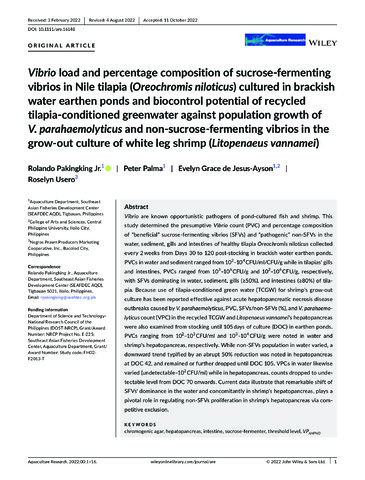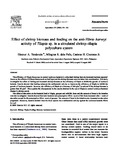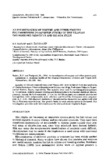| dc.contributor.author | Tendencia, Eleonor | |
| dc.contributor.author | dela Peña, Milagros R. | |
| dc.contributor.author | Fermin, Armando C. | |
| dc.contributor.author | Lio-Po, Gilda | |
| dc.contributor.author | Choresca, Casiano H., Jr. | |
| dc.contributor.author | Inui, Yasuo | |
| dc.date.accessioned | 2013-11-13T03:24:35Z | |
| dc.date.available | 2013-11-13T03:24:35Z | |
| dc.date.issued | 2004 | |
| dc.identifier.citation | Tendencia, E. A., dela Peña, M. R., Fermin, A. C., Lio-Po, G., Choresca Jr., C. H., & Inui, Y. (2004). Antibacterial activity of tilapia Tilapia hornorum against Vibrio harveyi. Aquaculture, 232(1-4), 145-152. | en |
| dc.identifier.issn | 0044-8486 | |
| dc.identifier.uri | http://hdl.handle.net/10862/1721 | |
| dc.description.abstract | Disease due to luminous Vibrio has been a major problem of the shrimp industry. Different technologies have been introduced to control the disease. One of the techniques reported to work against luminous bacteria in the Philippines is the green water culture system (or finfish–shrimp integrated culture system). A green water culture system is an innovative technique wherein shrimp are cultured in water collected from a pond where tilapia or other fish species are grown. In some cases, the fish are cultured in an isolated net pen inside the shrimp culture pond. This study clarifies the effect of one component of the green water culture system, the presence of all male tilapia (Tilapia hornorum) on luminous bacteria Vibrio harveyi. Results showed that stocking tilapia at a biomass not lower than 300 g/m3 efficiently inhibited the growth of luminous bacteria in shrimp (biomass=80 g/m3) rearing water without the growth of microalgae. | en |
| dc.description.sponsorship | The study was funded by the Government of Japan through the Trust Fund granted to SEAFDEC/AQD under study code FH 07 C2001T. | en |
| dc.language.iso | en | en |
| dc.publisher | Elsevier | en |
| dc.subject | antimicrobial properties | en |
| dc.subject | Philippines | en |
| dc.subject | Green water culture system | en |
| dc.subject | prawns and shrimps | en |
| dc.subject | tilapia | en |
| dc.title | Antibacterial activity of tilapia Tilapia hornorum against Vibrio harveyi | en |
| dc.type | Article | en |
| dc.citation.volume | 232 | |
| dc.citation.issue | 1-4 | |
| dc.citation.spage | 145 | |
| dc.citation.epage | 152 | |
| dc.citation.journalTitle | Aquaculture | en |
| dc.subject.asfa | antibiotics | en |
| dc.subject.asfa | aquaculture techniques | en |
| dc.subject.asfa | bacterial diseases | en |
| dc.subject.asfa | disease control | en |
| dc.subject.asfa | fish culture | en |
| dc.subject.asfa | inhibitors | en |
| dc.subject.asfa | males | en |
| dc.subject.asfa | microorganisms | en |
| dc.subject.asfa | monoculture | en |
| dc.subject.asfa | pathogenic bacteria | en |
| dc.subject.asfa | shrimp culture | en |
| dc.subject.asfa | water | en |
| dc.identifier.doi | 10.1016/S0044-8486(03)00531-3 | |
| dc.subject.scientificName | Tilapia hornorum | en |
| dc.subject.scientificName | Vibrio harveyi | en |
| dc.subject.scientificName | Oreochromis urolepis | en |



